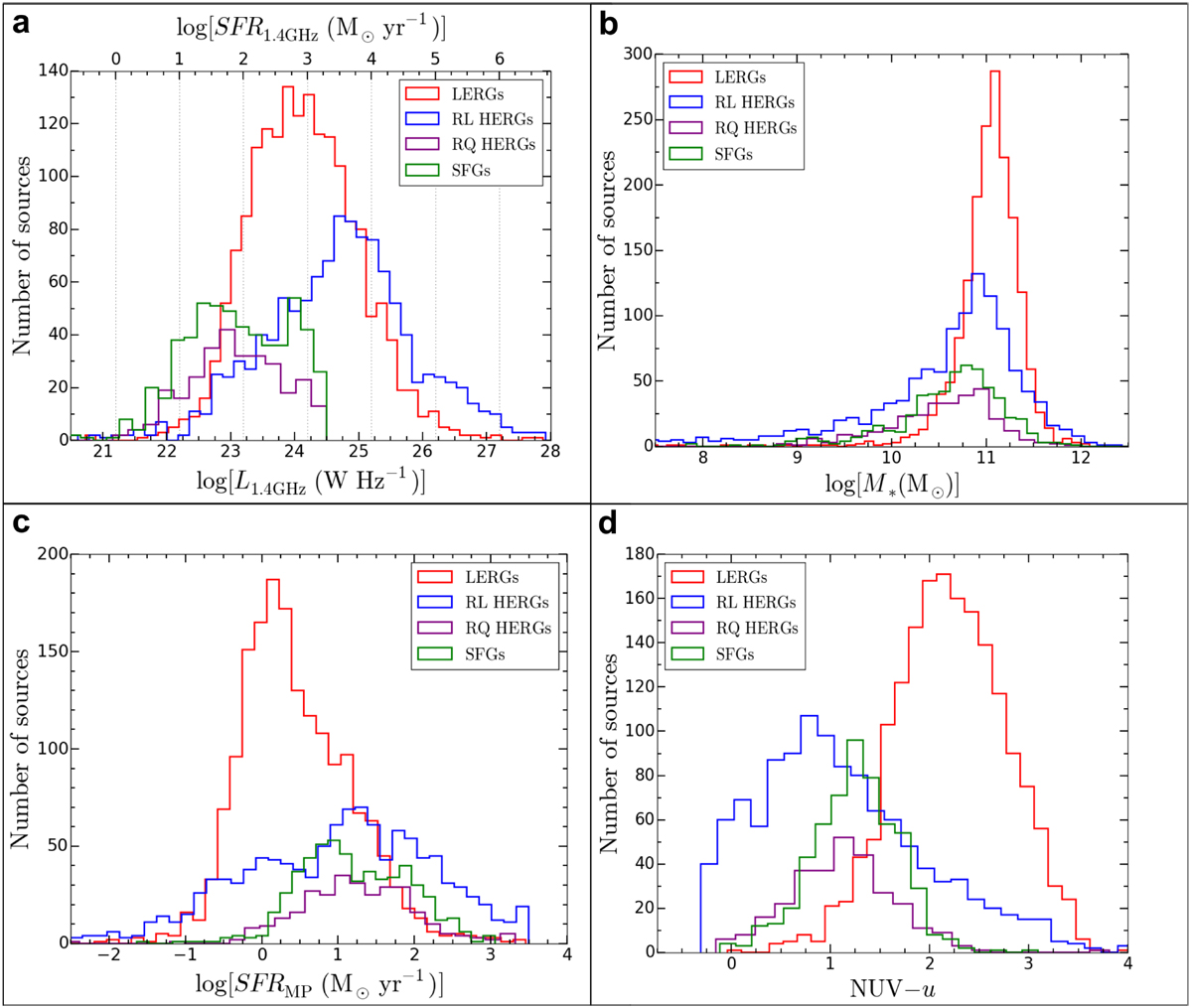Fig. 26

Panel a: rest-frame 1.4 GHz radio luminosity (L1.4 GHz, bottom axis) and 1.4 GHz SFR (SFR1.4 GHz, top axis) distributions for the LERGs, HERGs, and SFGs in XXL-S. LERGs and RL HERGs are found at all radio luminosities, but RL HERGs tend to have higher luminosities. The SFGs and RQ HERGs are cut off at at L1.4 GHz < 1024.5 W Hz−1 because of the radio luminosity requirement for radio AGN. The high SFR1.4 GHz values for LERGs and RL HERGs (≳103.3 M⊙ yr−1) are due to AGN contamination in their radio emission. Panel b: MAGPHYS stellar mass (M*) distribution for the LERGs, HERGs, and SFGs in XXL-S. The host galaxies of LERGs have median M* ≈ 1011.06 M⊙, whereas HERGs and SFGs tend to be hosted by galaxies of lower median stellar mass (median M* ≈ 1010.6 –1010.8 M⊙). Panel c: MAGPHYS star formation rate (SFRMP) distribution for the LERGs, HERGs, and SFGs in XXL-S. LERGs exhibit low median SFRs (~2 M⊙ yr−1) compared to that of HERGs and SFGs (~12–17 M⊙ yr−1). Panel d: NUV − u colour distribution for the LERGs, HERGs, and SFGs in XXL-S. The colours were derived from the MAGPHYS SED fitting. LERGs have redder median colours (NUV − u ≈ 2.21) than RL HERGs (NUV − u ≈ 0.99), RQ HERGs (NUV − u ≈ 1.12), and SFGs (NUV − u ≈ 1.25).
Current usage metrics show cumulative count of Article Views (full-text article views including HTML views, PDF and ePub downloads, according to the available data) and Abstracts Views on Vision4Press platform.
Data correspond to usage on the plateform after 2015. The current usage metrics is available 48-96 hours after online publication and is updated daily on week days.
Initial download of the metrics may take a while.


